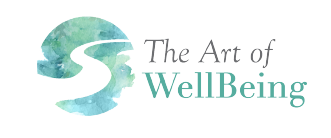Emotional Exercise
In the last church I pastored, there was a strong-willed, opinionated, often challenging 85-year-old woman who also happened to have a delightful sense of humor. Once, after hearing a sermon where I mentioned getting pulled over for speeding, she went to Cracker Barrel and bought me a ceramic snail. “Just a reminder,” she said. “Slow down!”
I thought about Madeline recently as I shared ideas for emotional exercises during a one-day grief retreat. With physical exercise, I told them, we want to speed up; with emotional exercise, we slow down.
For all leaders, especially those who strive to embody a coaching mindset, emotional regulation is essential. By managing our emotions, leaders cultivate the ability to be fully present—focused, observant, empathetic, and responsive to those we serve. Developing and maintaining the ability to regulate one’s emotions helps us to make thoughtful, unbiased decisions. Emotional regulation also builds trust, as team members feel safe when leaders are composed and approachable. It improves leaders' capacity to handle feedback constructively, adapt to change, and remain open-minded. Moreover, it reduces the risk of burnout and promotes overall well-being, making leaders more resilient and effective in their roles over the long term.
One of the simplest ways to regulate our emotions—including sadness and grief—is to breathe. The technique I teach is called “ratio breathing” which I learned from a long-time yoga teacher, Tammy Kolbo. Begin by breathing in and out through your nose, keeping mouth, neck, and jaw relaxed. As you breathe, start to lengthen each exhale until your exhalations are twice as long as your inhalations. So, you might breathe in to a slow count of three and out to six. Or in to count of four and out to eight. Initially, it may feel challenging to make the exhale twice as long. If so, keep focusing on lengthening each exhale, flattening your belly to expel any remaining breath. The goal here is not to breathe more deeply but to slow down the breath rate until you reach a rhythm of about 5-6 inhales and exhales per minute.
Ratio breathing—which one retreat participant had heard called “Xanax breathing”—has been scientifically proven to lower pulse and blood pressure. It can be practiced with noticeable results in less than two minutes. (I have set an intention to practice two minutes of ratio breathing three times a day for the next week or until we know the results of the presidential election. Regardless of election results, I may decide to extend this daily practice for the foreseeable future.)
In his engaging book Breath, James Nestor explores the power of slow breathing and how it aligns with practices like prayer and meditation. He explains that traditional prayers and chants, across various cultures and religions, often involve rhythmic and controlled breathing patterns that are slow and deep. This breathing rhythm, averaging about 5.5 breaths per minute, has been shown to stimulate the parasympathetic nervous system, which promotes relaxation and balance in the body.
Nestor points out that this slow breathing rate, embedded within prayer rituals, isn't just spiritual but also profoundly physiological, as it optimizes heart rate variability and helps to reduce stress. He describes how the combination of focused breathing with meditative or prayerful intentions can help individuals find a deeper sense of peace and connect with their spirituality in a calming, restorative way.
Breathing slowly while lengthening the exhale is one of the simplest and most effective emotional exercises I know. It soothes anxiety and even powerful grief. Additionally, I have encouraged clients and retreat participants to create breathing mantras, affirmations, or “breath prayers” to utilize while practicing ratio breathing. This form of emotional exercise is simple, efficient and inconspicuous. It can be used anytime, anywhere, by anyone. I encourage you to try it for the next seven days and notice how it impacts your emotions.
Walking with you,
Vicki
